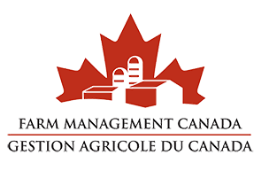Category: People | Topic: Public Trust and Consumer Advocacy
Posted Date: April 13, 2021

Context
The COVID-19 crisis has accelerated a movement of population from large urban centres to suburbs, small towns, and rural areas with record numbers of people leaving large cities in 2020.
Meanwhile, the COVID-19 crisis has also shown that generalized work-from-home is possible, especially for office jobs. So, it can be expected that this movement of population from urban areas towards rural areas will persist.
Some rural areas could therefore experience a dramatic and lasting remodelling of their social fabric with people holding different sets of values and expectations.
In the rural areas where this shift occurs, a remodelling of the local economy driven by the demand from these new households for goods and services can create new business and employment opportunities beyond agriculture and agribusiness.
What does it mean for farmers?
This trend could mean a changing environment carrying new risks. The new, urban neighbours may arrive in the community with a different set of values, norms and beliefs, and little knowledge and understanding of the actual farming realities in the community.
PUBLIC TRUSK RISK
As the new group settles and gets involved in the community, farmers may get questioned about their production practices and the answer to these questions may determine the extent of the risks they face. In the absence of diligent, transparent, and truthful answers, the farmers are at risk.
BUSINESS RISK
Suspicion and conflicts increase the immediate risk to the personal well-being of farmers (social isolation, mental fatigue). Over time, it could translate into direct opposition to the farm’s project in jurisdiction where the outcome of public consultation is binding.
POLITICAL RISK
In the meantime, the political orientation of the community may shift, and the farming community could lose some of its influence, first at the municipal level but could also affect political representation at the provincial and federal levels.
PRODUCTION RISK
In that new environment, farmers may choose to adopt new practices or change their production mix to seize new market opportunities or to respond to the pressure. As often, the transition to new practices or production systems carries production risk.
How can farmers manage these risks?
These demographic changes will not happen overnight, and these risks can be managed.
Strengthening connections with the community is the first best practice for farmers to consider to get a sense of what is changing, at what pace. As new risks and new opportunities arise occur in their business environment, farmers must review their strategic plan.
Engagement with the community will also be an opportunity to educate newcomers to the reality of farming, maybe by organizing an annual open-door activity (if permitted) or considering a virtual equivalent.
As the demand for transparency about their operations increases, farmers should consider documenting and publicizing how their activities are conducted.
Resources
Organizations such as Farm & Food Care and Agriculture More Than Even can help farmers access useful tools and resources, as well as provide tips on how to engage in positive dialogue with their stakeholders. The web-based platform AgriShield® can also be used to a comprehensive assessment of the risks and provides resources to help them manage them adequately.
 Skip to main content
Skip to main content
